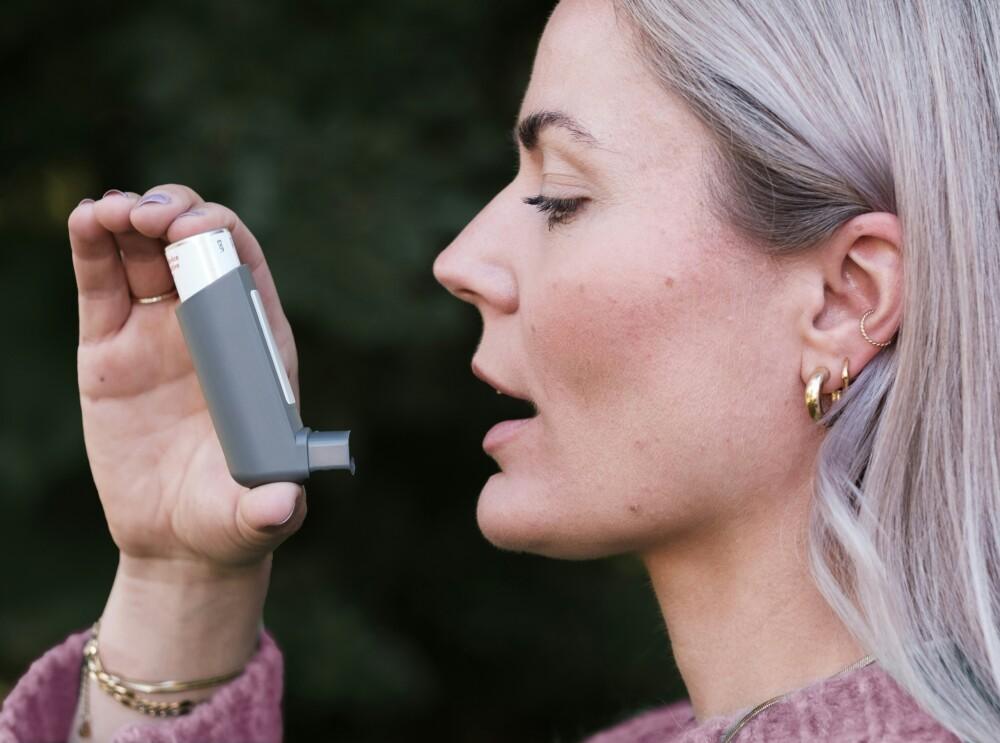What Role Does Naturopathy Play in NYC Asthma Management?
Naturopathy plays an important role in bronchial asthma management by identifying and addressing potential triggers. This includes but is not limited to allergies, diet, and stress. It also fortifies pulmonary defenses, encompassing preventative empowerment, so the body can resist the triggers.
Asthma leads to airway hyperactivity when triggers affect your respiratory tract. Common causes include New York allergens such as dust mites and cockroach droppings, outdoor air pollution, and seasonal change triggers. For example, an increase in humidity leads to damp apartments and mold, whereas spring arrival increases pollen exposure.
Data from the New York State Department of Health shows that 1.4 million adults in New York have asthma. Almost one in 13 children in school is also afflicted, with the rate rising significantly in urban areas. This increases inhaler reliance, especially among residents who spend long hours commuting.
Naturopathic management integrates environmental navigation through your triggers and strengthens pulmonary defenses. It reduces irritant exposure while strengthening the lungs, giving you more control. A mixture of diets, lifestyle choices, and breathing techniques makes asthma more manageable, decreasing flare-up frequency.
How Does NYC Air Quality Trigger Respiratory Distress?
NYC air quality triggers respiratory distress through high ozone levels, pollen, and fine particulate matter (PM2.5).
Poor air quality provokes inflammatory cascades, which initiate a spasmodic response in those with bronchial asthma. The inflammatory response leads to bronchial constriction, making people feel like they’re not getting enough air in their lungs.
NIH data reveals that particulate matter levels in subway system air exceed safe levels. Some paths, such as the one that connects New York and New Jersey, show a 779 μg/m3 concentration. This is triggering for individuals with asthma.
Below are several common NYC pollutants known to cause asthma exacerbations:
- Ground-Level Ozone (O3): Forms in the sunlight as a result of vehicle and industrial emissions. It irritates the respiratory tract, leading to bronchial constriction and asthma flares.
- Fine Particulate Matter (PM2.5): Very small particles caused by combustion (e.g., traffic), which enter your lungs. They get into your lungs and cause inflammation, worsening asthma symptoms. Studies at the Max Planck Institute for Chemistry attribute 30% of global asthma cases to long-term PM2.5 exposure.
- Nitrogen Dioxide (NO2): Also caused by cars and combustion from buildings and factories, it worsens asthma symptoms. Studies at the University of Central Missouri show that higher NO₂ levels are associated with more asthma symptoms and hospital visits
- Sulfur Dioxide (SO2): Emitted by burning fossil fuels in factories, it irritates the airway and sends you into an asthma attack.
Recent seasons show earlier and longer pollen periods in many cities. The high pollen count in NYC mixed with the general pollution leads to even more severe asthma episodes, especially in spring and fall.
Ragweed is also a common allergen that causes problems during the fall among New York dwellers. Data from AAFA reveals that ragweed pollen levels are seven times higher in urban areas compared to rural regions, mainly because of the “urban heat island effect.” This exacerbates not only allergies but also asthma symptoms.
Can Particulates in New York Worsen Wheezing Episodes?
Particulates in New York worsen wheezing episodes because they enter your respiratory tract and lead to impaired mucociliary clearance. This is mainly caused by PM2.5 and PM10 infiltration.
Below are some ways that particulates worsen wheezing:
- Epithelial Irritation: Particulates irritate the epithelial linings in your respiratory tract, which leads to inflammation. This increases airway hyperactivity, making the wheezing worse.
- Mucociliary Issues: Pollution and allergens impair the mucociliary clearance system, keeping the body from expelling the pathogens. This worsens symptom severity because the particles keep irritating the tract.
- Indoor-Outdoor Transitions: Pollution particulates get into outdoor environments and accumulate when there’s poor ventilation. This can worsen asthma attacks, even if you are indoors.
Wheezing also worsens during specific times, such as rush hours or seasonal changes, when the particulate levels are higher. For example, if there’s a construction site nearby or the day is windy, the chances of coming into contact with irritating particles are much higher.
What Immune Imbalances Fuel Asthma in Urban Settings?
Immune imbalances like TH2 dominance and allergies fuel asthma in urban settings. These imbalances perpetuate allergic sensitization and drive recurrent attacks.
Naturopathic asthma immunity through dietary intervention and herbal remedies modulates the immune response to allergens and reduces asthma attacks.
Here is how the body responds when there’s an immune imbalance:
- TH2 Cytokine Overproduction
Allergies are associated with increased levels of TH2 cytokines, namely IL-4, IL-5, and IL-13. This leads to IgE elevation and airway hyperactivity, which contributes to chronic inflammation. This causes more intense allergic asthma attacks.
- Eosinophilic Inflammation
Eosinophils, located in the blood and tissue, release toxic proteins along with inflammatory mediators. This leads to a condition called eosinophilic asthma. It damages the airway tissue and worsens asthma symptoms.
Dysbiosis (an imbalance in the gut microbiota) influences chronic inflammations through the gut-lung axis. Altered gut–lung axis or dysbiosis has been associated with systemic inflammation that may influence airway responses . Studies at Heilongjiang University of Chinese Medicine show that 60-80% of asthma cases feature allergic phenotypes, many of which are rooted in the gut-lung axis.
How Can Gut Microbiome Affect NYC Respiratory Health?
The gut microbiome affects NYC respiratory health by influencing your pulmonary tolerance and modulating allergic thresholds. This happens via the gut-lung axis, where components like LPS and SCFAs send signals through the system, priming everything for inflammation.
This is popular in urban areas such as NYC, where poor diets, pollution, and stress disrupt the gut bacteria. As the microbiome becomes more imbalanced, toxins enter the body, causing the lungs to have stronger reactions to everyday exposure.
A study involving 12 randomized controlled trials at the Kasturba Medical College showed that certain probiotic strains, such as Lactobacillus and Bifidobacterium, reduced bronchial asthma attacks in 24 out of 212 patients.
Diet changes focusing on good nutrition, probiotics, and prebiotics improve lung resilience in the long term, decreasing its reactivity.
Does Stress Amplify Asthma Responses in the City?
Stress amplifies asthma responses in urban areas because it increases bronchial activity. This exacerbates trigger sensitivity, making the lungs more reactive to pollution and other allergens.
Stress encourages neuro-sympathetic activation (fight-or-flight response), while engaging with the hypothalamic–pituitary–adrenal axis (HPA). This leads to an excess release of catecholamines (e.g., epinephrine) and cortisol, which contributes to systemic inflammation.
When the stress becomes chronic, it leads to corticosteroid resistance. This causes the airways to no longer respond to corticosteroids, which are common active ingredients in traditional inhalers.
Daily city stressors of big cities, such as crowded commutes, noise, and high-paced living, cause continuous activation of the sympathetic nervous system. This pushes the airways into more reactive states, not even responding to the inhaler.
Naturopathy can complement conventional care and in some cases, may be an alternative when working with a practitioner who provides a tailored and safe plan.
Which Herbs Strengthen Lungs Against NYC Pollutants?
Herbs like mullein, licorice root, and butterbur strengthen against NYC pollution and reduce the chances of an asthma flare. These types of herbs clear mucosal obstructions and strengthen the epithelial barrier. With regular treatment, they act as anti-inflammatories and expectorants, offering relief from asthma symptoms.
Below are some natural asthma herbs and how they help when administered safely.
- Verbascum Thapsus (Mullein)
Mullein is an herb that acts as a gentle expectorant, helping you clear mucus from your lungs. Regular administration keeps airway inflammation at a minimum while soothing your respiratory tissue.
It is generally safe for adults in the form of tea and capsules, but you should contact a naturopath for a safe dosage for children.
- Glycyrrhiza Glabra (Licorice Root)
Licorice root is an anti-inflammatory herb and soothes the irritated mucus membrane. This action keeps the mucus clearance at optimal levels, allowing the body to clear out allergens and particles before they trigger a severe reaction.
It’s generally safe for adults when consumed in teas, capsules, and tinctures, but caution is advised for those with high blood pressure.
- Petasites Hybridus (Butterbur)
When asthma has allergic roots, butterbur reduces the release of histamines and calms inflammation. This offers relief and resistance to triggers, especially with frequent exposure.
The compound is usually administered in extract form, but it’s advisable to source it from a reputable provider. This ensures it’s free of pyrrolizidine alkaloids (PA-free extract), which can be harsh on the liver.
How Do Breathing Exercises Adapt for NYC Asthma Control?

Breathing exercises, such as the Buteyko method and diaphragm breathing, optimize ventilatory patterns. Regular implementations facilitate on-the-go mastery, reducing asthma attacks even when you are outside your comfort zone.
Here is how these breathing exercises work for asthma:
- Diaphragmatic Breathing: Engages the diaphragm and has you breathing through the abdomen instead of the chest. This decreases breathing pressure and improves the efficiency of the lungs, strengthening the respiratory muscles.
- Buteyko Method: emphasizes nasal, reduced-volume breathing and control-pause techniques to reduce hyperventilation. This normalizes your oxygen levels while preventing hyperventilation and shortness of breath, which are common in asthma.
- Box Breathing: Balances inhalation, breath holding, and exhalation to calm the nervous system. Sessions reduce stress and promote relaxation, which helps with asthma attacks.
These exercises are adapted for NYC asthma control because they are quick and suitable for every environment. Asthma patients can perform the exercises while sitting when they are commuting, while at the park, or during a short break at work.
Can Mindfulness Breathing Reduce Urban Asthma Attacks?
Mindfulness-based breathing practices can reduce stressors from living or working in an urban settling. These practices do not change the functions of the lung, but they can reduce the symptom perception of asthma improving one’s quality of life.
Practices like the Butekyo method and box breathing encourage vagal stimulation and shift the body from a sympathetic to a parasympathetic state.
To put it simply, it sends you from fight-or-flight into rest-and-repair. With time, this reduces airway constriction and reactivity to triggers.
Pranayama variations (focused on controlled breathing) calm autonomic flares and minimize attack frequency. Below are some NYC-based applications to consider:
- Start every commute with diaphragmatic breathing: inhale for 4 counts, exhale for 6.
- Box-breathe when stressed or feel an attack coming: inhale for 4 counts, hold for 6, exhale for 8.
- Do a mindfulness session at the end of every day and track your “episodes.”
Studies at the University of Wisconsin-Madison showed good results in patients undergoing mindfulness-based stress reduction. The trial revealed that 32% of patients showed significant improvement after 8 weeks of treatment.
What Nutritional Tactics Bolster Respiratory Resilience in New York?
Nutritional tactics that involve anti-inflammatory and antioxidant foods reduce the oxidative burden on the body and improve mucosal defense. This reduces the chances of an asthma attack, even if you come into contact with the allergens.
Below are some tactics to consider:
- Focus on Vitamin C Sources
Vitamin C-rich foods provide antioxidants that offer immune support and protect the body against oxidative stress. Good sources include the following:
- Citrus fruits such as grapefruit, oranges, and lemons
- Kiwis
- Bell peppers, especially the red kind
- Strawberries
- Broccoli
Vitamin-C-rich foods support antioxidant defenses.
A small study at the University of Helsinki suggest vitamin C may help some individuals; results vary.
Quercetin is also an antioxidant from the flavonoid family. Implementing it in your meal plans may support an anti-inflammatory meal plan and can help with allergies that contribute to asthma. Consider the following products:
- Apples
- Red onions
- Leafy greens
- Black and green tea
- Capers
These ingredients support the immune system, making it more resilient against triggers.
- Introduce Anti-Inflammatory Foods
Anti-inflammatory foods diminish systemic inflammation that compromises your immune response. Consider adding the following foods to your diet:
- Berries
- Fatty fish
- Leafy greens
- Seeds and nuts
Asthma-prone individuals should avoid exposure to known allergens like dust mites, pollen, or pet dander. Air purifiers and regularly cleaning your home create a controlled environment, at least when you are indoors. These avoidance tactics, combined with good nutrition, should offer more resilience against asthma triggers.
What Improvements Can NYC Patients Expect from Naturopathic Respiratory Care?
NYC patients should monitor and track control and lung function with your clinician. Some individuals notice improvements over a few months.
Expect improvement based on the following timelines:
- Forced Expiratory Volume in 1 Second (FEV1): Patients should see respiratory improvement within 12 weeks.
- Symptom Exacerbation: Asthmatic people should see flare-up reduction within 6-12 months.
- Symptom Control: Many patients report better symptom control in the first few months.
- Medication Reliance: Some patients use rescue medication less when control improves.
Patients should remember that results align with consistent application. Recovery phases may take longer in New York City dwellers, as exposure to pollutants is higher compared to other areas.
How to Access Naturopathic Asthma Support in New York?
Asthma patients in New York can access naturopathic support by contacting Naturally Sue Wellness, the virtual naturopathic office of Dr. Susan Cucchiara. She offers lung-focused intakes for city residents.
Consultations focus on assessing all potential causes that may be exacerbating or causing asthma and natural ways to support you through urban exposure. Virtual consultations offer access to personalized plans to help you reduce asthma flares, improving quality of life.







